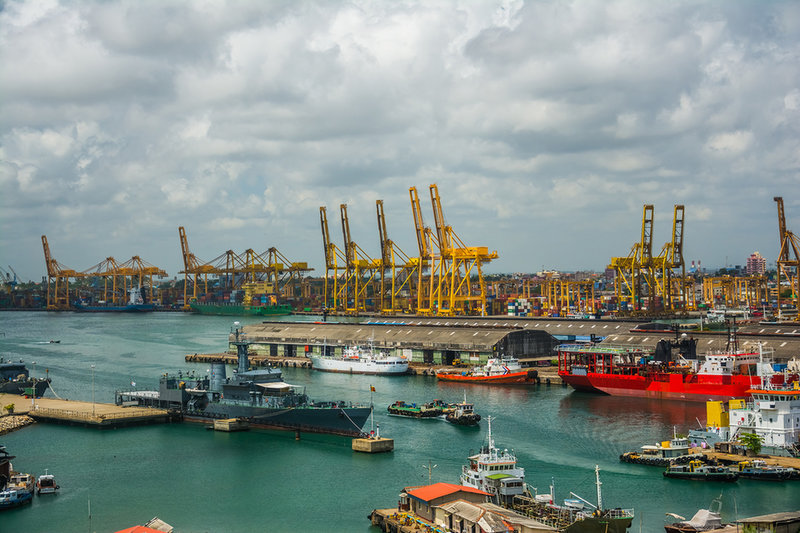Sri Lanka’s optimised fashion logistics
In shipping and logistics, persistence pays. After two years of increasing congestion and unprecedented increases in freight rates, the chairman of the Global Shippers Forum and Apparel Logistics Committee at the Joint Apparel Association Forum Sri Lanka, Sean Van Dort, argues there are finally signs the situation is improving.

The majority of Asia’s largest ports are finally showing signs of congestion easing and these improvements couldn’t have come at a better time given that maritime freight rates had been on an upward trend since the second half of 2020. As of September 2021, rates had increased by 292% year-on-year (YoY) .
While the consensus is that freight rates would not normalise until at least the end of 2022, they also appear unlikely to increase much further at present, given that two of the world’s top container lines have pledged to freeze their spot rates and put off any further increases in spot freight rates for containerised cargo. Barring any further unforeseen disruptions, and supported by similar measures from other carriers we could see further improvements in freight rates much earlier than what was initially projected.
These developments have positive implications for Sri Lankan exporters, apparel manufacturers, and their buyers as input costs begin to normalise and bottom-line pressure eases across the board.
Unprecedented challenges
Prior to the pandemic Sri Lanka was one of South Asia’s most connected nations – both in terms of shipping and air travel. At the peak of the pandemic and lockdowns while the port experienced berthing congestion the total passenger aircraft reduced to zero. In the interim, it was up to the Sri Lankan logistics industry to keep the country’s exporters afloat, by ensuring manufactured goods made their way to buyers despite facing many challenges.
The apparel sector – which accounts for close to 40% of Sri Lanka’s exports – took charge by creating solutions for the crisis. For the first time, air freight was leveraged above maritime routes to import the majority of raw materials and export orders that would have been delayed if we waited for the shipping crisis to resolve.
When Sri Lanka entered its most intense lockdown phase, and airports closed, the industry immediately pivoted to partnerships with specialist freighters until passenger and cargo aircraft could resume. Sri Lanka’s logistics sector has had its mettle tested, and we have proved our ability to meet unprecedented challenges with outstanding agility. Our success in the face of such immense difficulties is no accident either.
Time is money
Sri Lanka’s reputation as a leading global powerhouse in apparel is the result of multiple factors – our dedication to quality, investments in our people, and technology. The business of apparel is not just delivering quality, it’s delivering on time.
Everyone understands that fashion and apparel are notoriously fast-paced businesses. With apparel accounting for the vast majority of Sri Lanka’s exports, this has meant that Sri Lankan apparel and logistics firms had to collaborate to match international requirements. Apparel has played a major role in elevating Sri Lanka into its current position among the most agile supply chains in Asia.
Given Sri Lanka’s location, the island attracts feeder vessels from across the region, meaning that Colombo is often the last port of call in Asia before vessels embark to Western ports. Additionally, most Sri Lankan apparel buyers have forward contracts in place with major shipping lines, which means that wherever possible, vessels are legally obligated to call Colombo. While providing immediate benefits to the apparel sector, this also creates opportunities for other Sri Lankan exporters as well.
Given that relative to commodities, apparel adds less weight to ships, it is often the final item to be loaded as cargo, meaning it can also be unloaded faster. Such minor advantages add up to immense time-saving at scale. The same is also true for other Sri Lankan exports.
Internally, Sri Lanka’s logistical capabilities are unmatched, and the industry can confidently guarantee that cargo can be moved from any point in the country, be transported into an international port, and be ready for loading within 24 hours.
Emerging opportunities
These capabilities are supported by strategic policy and process reforms and championed by the logistics partners and divisions within Sri Lanka’s apparel industry. These include key initiatives such as the introduction of technology infrastructure to drive the complete digitalisation of documentation around customs and export processing for Board of Investment (BOI) companies.
In a post-Covid landscape, brands are looking hard at options for nearshoring. This presents further challenges and potentially new opportunities for Sri Lanka’s apparel firms. Nearshoring is driven by the need for brands to maintain costs and reduce risks. Given that Sri Lanka’s logistics sector has demonstrated its agility and resilience in the face of crisis, I believe we can provide buyers with an added sense of security, because Sri Lankan firms are already going above and beyond the call of duty to ensure their goods arrive on time. By driving further reforms, as well as technological and process innovations, we will be able to offer improved cost structures.
Sri Lanka is also ideally positioned to capture one of the largest emerging opportunities in apparel. Over the medium to long term, Asia will not only be home to the world’s largest manufacturing base, it will also be called home by the world’s largest – and increasingly wealthy – consumer base.
If we continue to act strategically, the trend towards nearshoring could also give rise to increased intra-Asian trade, a great deal of which could be funnelled through Sri Lankan ports quickly and cost-effectively. Sri Lanka’s emerging role as a nodal point between East and West means our sophisticated logistical capabilities will be one of our most compelling value propositions – for fashion and apparel brands and for a much broader cross-section of global industries.
BACK TO TOP
COMMENT